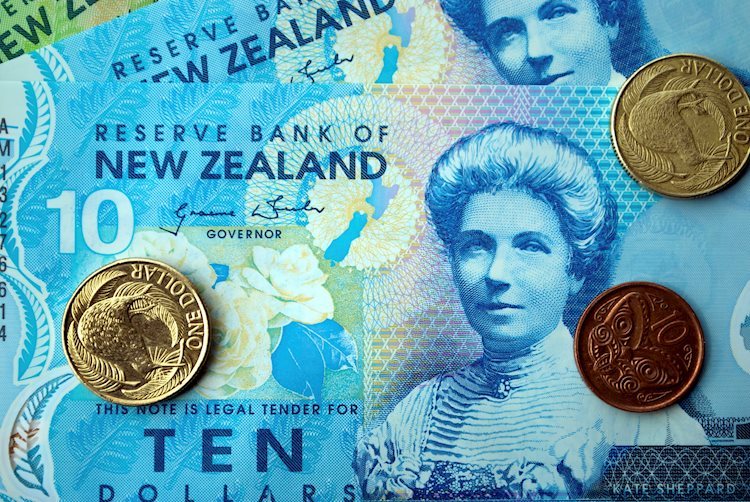
- NZD/USD gathers strength around 0.6280 in Thursday’s early Asian session, up 0.57% on the day.
- New Zealand’s Business confidence soars to the highest in a decade in a recent ANZ Business Outlook survey, boosting the Kiwi.
- The second estimate of US Q2 GDP growth numbers will be closely watched.
The NZD/USD pair gains momentum near 0.6280, the highest level since January 4, during the early Asian session on Thursday. The uptick of the New Zealand Dollar (NZD) is bolstered by firmer rate cut expectation from the Federal Reserve (Fed) and an encouraging New Zealand ANZ Business Outlook Survey.
New Zealand’s Business confidence for August, as measured by the ANZ Business Outlook Survey climbed to its highest level in a decade. The headline confidence measure in the survey rose to 51.0 in August. While the expected own activity measure surges to a seven-year high of 37.0. ANZ chief economist Sharon Zollner commented that the survey “showed a flurry of optimism.” This development boosts the Kiwi against the US Dollar (USD).
The Fed Chair Jerome Powell said last week that the US central bank was ready to cut the interest rates. Meanwhile, Minneapolis Fed Neel Kashkari noted it was appropriate to discuss potentially cutting interest rates from as early as September due to a weakening labor market.
His comments echoed similar remarks by the Presidents of the St. Louis Fed, Alberto Musalem, and the Atlanta Fed president, Raphael Bostic. These dovish comments from Fed officials are likely to undermine the Greenback in the near term.
The second estimate of US Q2 GDP growth numbers will be the highlight on Thursday. The US economy is estimated to grow 2.8%. The stronger-than-expected outcome could lift the USD and cap the upside for NZD/USD.
New Zealand Dollar FAQs
The New Zealand Dollar (NZD), also known as the Kiwi, is a well-known traded currency among investors. Its value is broadly determined by the health of the New Zealand economy and the country’s central bank policy. Still, there are some unique particularities that also can make NZD move. The performance of the Chinese economy tends to move the Kiwi because China is New Zealand’s biggest trading partner. Bad news for the Chinese economy likely means less New Zealand exports to the country, hitting the economy and thus its currency. Another factor moving NZD is dairy prices as the dairy industry is New Zealand’s main export. High dairy prices boost export income, contributing positively to the economy and thus to the NZD.
The Reserve Bank of New Zealand (RBNZ) aims to achieve and maintain an inflation rate between 1% and 3% over the medium term, with a focus to keep it near the 2% mid-point. To this end, the bank sets an appropriate level of interest rates. When inflation is too high, the RBNZ will increase interest rates to cool the economy, but the move will also make bond yields higher, increasing investors’ appeal to invest in the country and thus boosting NZD. On the contrary, lower interest rates tend to weaken NZD. The so-called rate differential, or how rates in New Zealand are or are expected to be compared to the ones set by the US Federal Reserve, can also play a key role in moving the NZD/USD pair.
Macroeconomic data releases in New Zealand are key to assess the state of the economy and can impact the New Zealand Dollar’s (NZD) valuation. A strong economy, based on high economic growth, low unemployment and high confidence is good for NZD. High economic growth attracts foreign investment and may encourage the Reserve Bank of New Zealand to increase interest rates, if this economic strength comes together with elevated inflation. Conversely, if economic data is weak, NZD is likely to depreciate.
The New Zealand Dollar (NZD) tends to strengthen during risk-on periods, or when investors perceive that broader market risks are low and are optimistic about growth. This tends to lead to a more favorable outlook for commodities and so-called ‘commodity currencies’ such as the Kiwi. Conversely, NZD tends to weaken at times of market turbulence or economic uncertainty as investors tend to sell higher-risk assets and flee to the more-stable safe havens.
